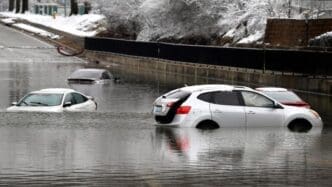Around the world, nature’s fury has been both relentless and unpredictable. The Mekong Delta in Vietnam, once a thriving agricultural hub, is now battling rising sea levels as salty ocean waters encroach further inland. Farmers, who once relied on fertile land to sustain their families, find their way of life rapidly changing, resorting to living on houseboats and navigating floating markets amidst the floods. Similarly, in Tahiti, construction for the Paris Olympics on precious reefs threatens marine ecosystems, relying on these reefs for survival.
Europe has faced its own climate-induced challenges. Spanish farmers, alarmed by rising costs and imports, protested for survival, while in Kenya, the battle for water is ongoing as communities struggle with a warming Arabian Sea. Yet, it’s not all grim. There are pockets of positivity, like in India, where natural farming techniques are providing hope amid despair.
Water scarcity remains a stark issue for over 2 billion globally, with countries like Brazil and India visibly illustrating the severity. In Brazil, the natural collection of water from mountains has become a lifeline, despite the risks of waterborne diseases. Photographer Silvia Izquierdo notes the community’s confidence in relying on nature, seeking quality over convenience.
From the Ojibwe in Wisconsin to the Quinault Nation in the U.S., indigenous communities are showing remarkable resilience. While the Ojibwe continue their spearfishing traditions, the Quinault are preparing for an inland relocation as coastal erosion threatens their homes. Meanwhile, heavy rains and floods displace countless others in places like Kenya and Uruguay, underscoring the dire need for climate resilience.
The scorching temperatures of 2024 have been devastating, particularly for regions like Saudi Arabia, where heat-related deaths have surged. This relentless heat wave has endangered people and biodiversity, with the Galapagos Islands experiencing severe impacts.
California’s wildfires, burning over a million acres, were yet another reminder of the brutal toll of rising temperatures. These fires not only devastated communities but also imperiled countless animal species in their path.
Despite the overwhelming destruction, glimpses of nature’s splendor still emerged. In Churchill, Manitoba, tourists marveled at polar bears and beluga whales, though beneath the beauty lay a warning. The diminishing ice heralds harder times for polar bears, impacting their survival and reproduction.
Water, while a source of life, proved deadly in numerous instances this year. In India, Cuba, and Nigeria, floods left people in peril, illustrating how climate change alters natural weather patterns, leading to either deluges or droughts.
As 2024 ended, winter brought a temporary reprieve in the Northern Hemisphere. However, the unyielding trend of climate-induced calamities serves as a stark reminder of the challenges that await in 2025.
As we close the chapter on 2024, the events of this year stand as a sobering testament to the relentless march of climate change. While the world has withstood nature’s wrath and observed its fleeting beauty, the looming question remains: how will we adapt and respond to a planet in flux?
Source: Apnews








